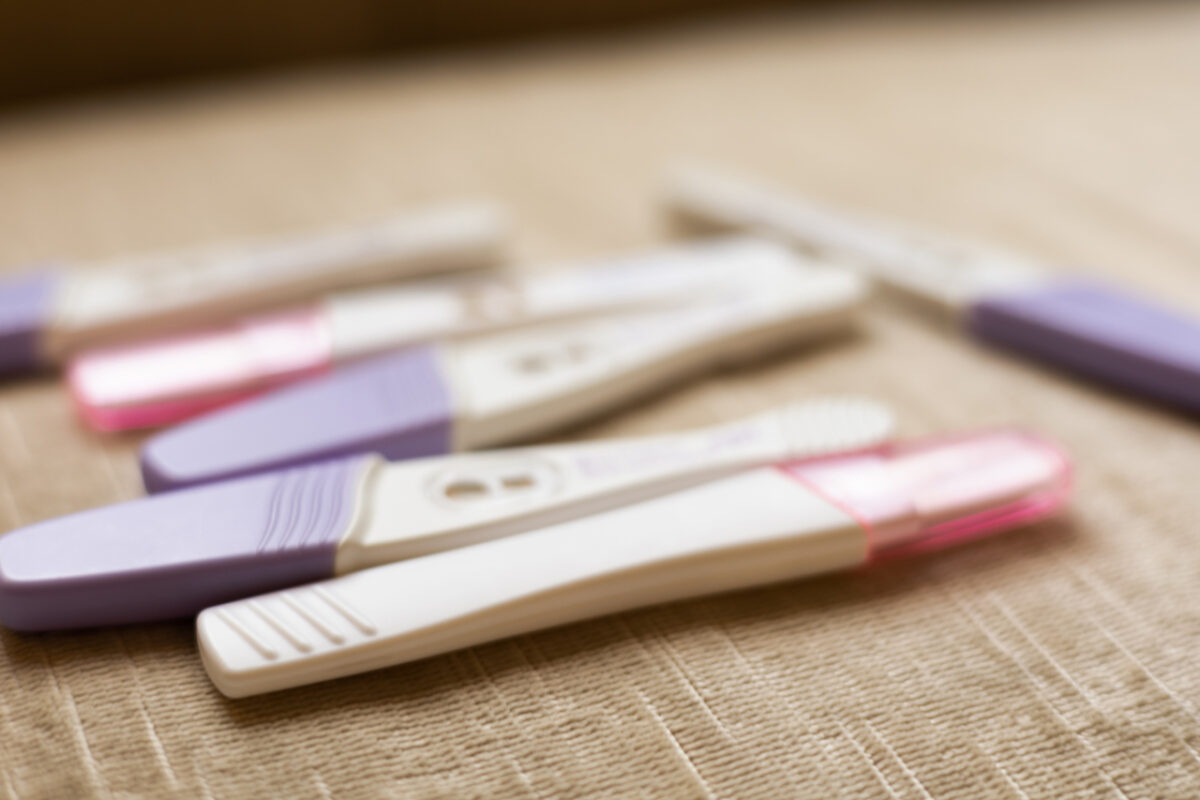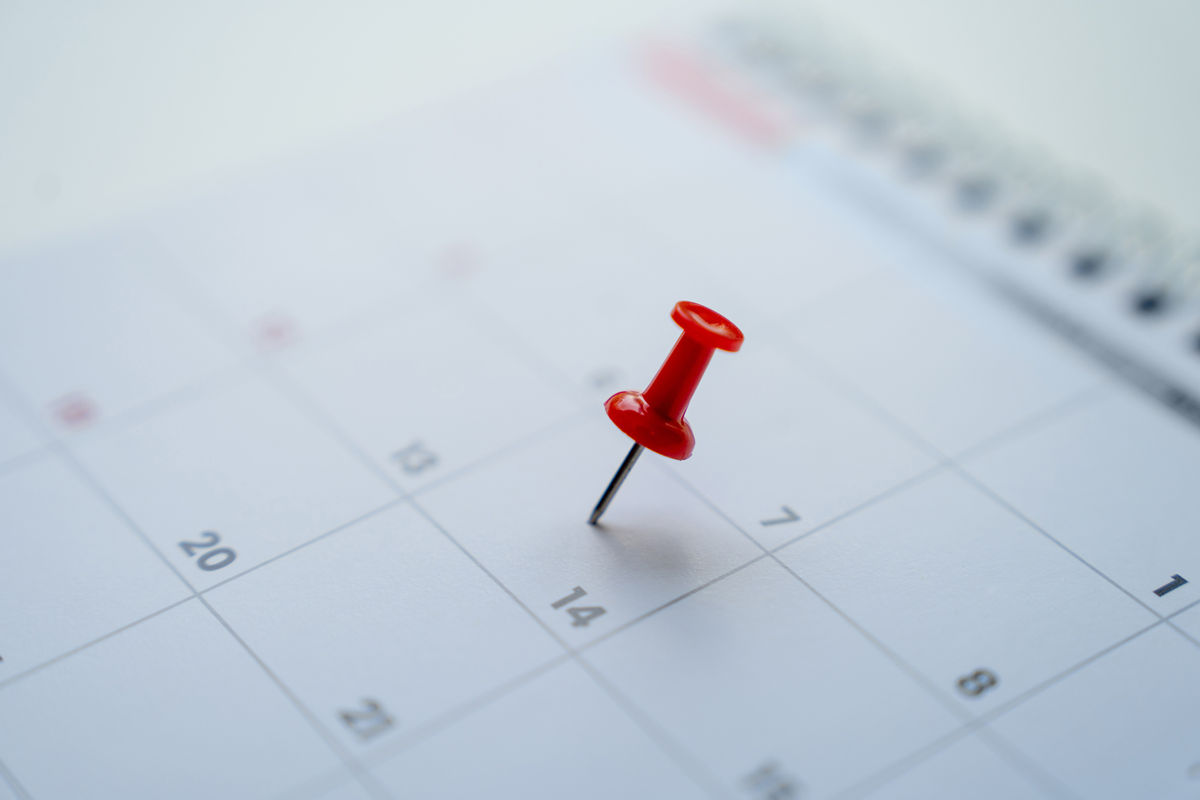Many people spend so much time trying to avoid pregnancy that when it comes to actively trying to conceive, it can feel like, “Okay, I stopped the birth control. Now what?”
I encounter this scenario often in the patients who come to see me. Stopping birth control is a great place to start, and for some, that may be all that is needed. But I like to plan, so if you’re like me and find yourself in the position to do so, there are a couple of other things you can do to maximize the chances of getting pregnant.
Before we begin, I want to emphasize that if you don’t have time, the ability, or, frankly, the desire to do any of this, don’t panic! You won’t harm anything, and you can still have a healthy pregnancy. On the flip side, if you do all of this and still don’t end up pregnant, it’s not your (or your partner’s) fault. Infertility is very common, and there are many treatment options available if you need them.
The other thing that is important to mention is that this article is specifically going to focus on things that people with ovaries in heterosexual relationships without the need for donor sperm or eggs can do to optimize the chances of success. If that is not you, some of the information here may still be helpful. However, there are other considerations for people who are in same-sex relationships or who need donor sperm or eggs, for a number of reasons.
We’re going to talk about setting expectations, understanding your fertility window, and making a plan for how you’ll time sex. Let’s get started.
Think about the long game
It’s a good idea to set realistic expectations for yourself and your partner from the beginning. Human reproduction is incredibly inefficient. Even for healthy heterosexual couples without infertility, it can take a year to conceive. This means that you can do everything right and it still may not happen even in the first few months of trying. But it can also happen right away, so be prepared for that possibility as well.
It is really important, however, not to keep trying on your own for too long if there are signs that you may need help from a reproductive endocrinologist and fertility specialist. “Trying” doesn’t have to mean doing everything possible; it can just mean having regular unprotected sex. How long you should try before seeking help depends on your age.
If you’re under 35 and you’ve been having unprotected sex with your partner for a year and haven’t gotten pregnant, you should see a specialist. If you are 35 years old or more, we suggest you seek help after trying for six months. If you are 40 years old or more, we suggest you see a specialist right away before you try to conceive. This is because the chances of conceiving at this age without help are lower, and treatment success goes down with age.
You should also be seen right away if you have any condition that may make it more challenging for you to conceive without assistance, like polycystic ovary syndrome (PCOS) or endometriosis. You are more likely to need help conceiving with any of these conditions.
Going into trying to conceive with the knowledge that it may take some time and that there are resources available to help you can be comforting. This is not only a physical journey but an emotional one as well, so talk to your partner about how you’ll navigate and support each other through this experience.
Track your fertility window
This may seem obvious, but step one is stopping your birth control if you’re taking any. Plan to stop your birth control about three to six months before you’re ready to start trying (use barrier contraception like condoms if you don’t want to become pregnant in this time frame). Depending on the type of birth control, your periods should restart right away, and you can use the few months before you’re ready to start trying to get a sense of your menstrual cycle. If your periods have not resumed by three months after stopping birth control, you should see a gynecologist, as this may be a sign of an underlying problem with ovulation.
Once you start trying, the main thing you can do to optimize your chances is having sex at the right time in your menstrual cycle. In any given menstrual cycle, fecundability — the probability of achieving a pregnancy — is possible during the five days before ovulation (see the graph below). This is because, once ovulated, an egg has about a 24-hour window to be fertilized. Ideally, sperm is already there waiting, so understanding your specific fertility window is key to optimizing your chances.
You experience your peak fecundability (i.e. when pregnancy is most likely to occur) when sex occurs within two days before ovulation. Historically, those trying for pregnancy were told to time sex for around this time. Unfortunately, that can be a pretty big mood killer (the pressure!). Luckily, sperm can survive in the reproductive tract for about five days. So a good alternative is to plan to have sex starting the week before you expect to ovulate.
But wait, how do you know if you are ovulating? The easiest and most straightforward way is if you are having regular periods. What do we mean by regular? We mean having a period every 21 to 35 days. It is totally normal for the exact day that your period starts to fluctuate within a week or so, as long as you remain in the 21-to-35-day window. If you are not having regular periods, this is a concern and a reason to seek out help sooner.
While it is possible, it is very rare to have regular periods and not be ovulating, so many people with regular periods don’t need to do any specific testing to make sure. From here, estimating the day of ovulation involves some quick math; no matter how long your menstrual cycle is, the second half (after ovulation) is about 14 days. So you can subtract 14 from the day that you anticipate your period to get a rough idea of when ovulation will occur.
What if you want to know exactly when you ovulate? There are a number of different ways to track ovulation, and one of the easiest is to use ovulation predictor kits. These are at-home urine tests (think pregnancy tests) that check for one of the hormones that surges with ovulation. Keep in mind that the exact date of ovulation will also likely fluctuate each cycle. You can purchase these online or at a local drugstore — there are many options available at different prices.
A low-tech alternative is tracking your cervical mucus, which will typically go from a thick and sticky consistency to a clear, stretchy, and slippery consistency around the time of ovulation. There is also an increase in the amount of mucus, and it will typically peak two to three days before ovulation. This is by no means required for pregnancy to occur, so don’t be concerned if you don’t notice this change for you. Here is a great resource for how to perform this method.
Another low-tech option is checking your basal body temperature — the temperature your body is at rest. After ovulation, your basal body temperature will go up by fractions of a degree to a degree or two, so we’re talking about a very small increase. This is something that you’re going to want to take first thing when you get up in the morning, before you even get out of bed. It will give you retrospective data about when you ovulate; you’ll only find out after ovulation has occurred. So this is something you’ll want to do a few months ahead of time to get a general sense of when ovulation happens for you.
Plan the timing of sex
A common misconception is that frequent ejaculation (aka having too much sex or masturbating too frequently) can decrease sperm quality. A retrospective study tackled this exact topic by examining about 10,000 semen samples from about 6,000 men. The study authors found that in men with normal semen quality, semen analysis parameters remained normal even with daily ejaculation. Surprisingly, the authors also found that for men with low sperm count, called oligospermia, daily ejaculation resulted in the highest sperm concentration and motility. While semen analysis parameters are not exactly the same as the capacity of the sperm to yield a healthy pregnancy, these data are helpful.
Daily sex may be a tall ask. Another helpful study, this one a prospective study, of about 200 women who were trying to become pregnant, found that cycle fecundity — the probability of achieving a live birth — was similar with sex that occurred daily, every other day, and every three days within the fertility window. On the flip side, this study also showed that cycle fecundity was lowest when intercourse occurred only once during the fertility window, so don’t do that if you can help it.
Does anything about the sex other than frequency matter? Sex position doesn’t matter at all, so do what you like! By the way, there’s no data to suggest any relationship between sex position and the infant’s sex. Unfortunately, there also isn’t any data to suggest that lying on your back after sex increases your chances of conceiving, though there is certainly no harm in doing so.
The effects of specific lubricants on sperm have only been studied in a lab setting, and the data from these studies show that many of the commonly available lubricants (yes, even water-based ones) inhibit the ability of the sperm to move and slow them down. I cannot stress enough that this may not translate to how the sperm behaves in the vagina and the rest of the reproductive tract, so please take this finding with a huge grain of salt. Canola oil, mineral oil, and a commercially available lube called PreSeed have not been found to have this same effect, though again this may not reflect what goes on in your body. No matter what you decide, you should opt for whatever gives you the most enjoyable sex.
The bottom line
- It can take up to a year to get pregnant, even if you time everything “perfectly.” If you do not get pregnant by one year, it is not your or your partner’s fault, and you should see a reproductive endocrinologist and infertility specialist.
- Plan to stop birth control three to six months before you’re ready to start trying. Use this time to track your periods. If your periods do not resume by three months after stopping birth control, see a gynecologist.
- To optimize your chances of conceiving, you need to understand when you ovulate. There are multiple ways to track this, including estimating based on your cycle length, basal body temperature, cervical mucus, and ovulation predictor kits.
- Once you are ready to start trying, aim to have sex every one to two days starting five days before you ovulate.












Log in
“no matter how long your menstrual cycle is, the second half (after ovulation) is about 14 days”
This is not the case for me. I know based on my nasal body temperature (via oura ring) that I ovulate around day 13 – 15. But my cycle is often 23-24 days long. I know that implantation takes 10-12 days, so this doesn’t really leave enough time.
I have read that the data on using clomid for short luteal phase is mixed. Would love a break down of what treatment options exist for this: is it just IVF? would IUI even work for this case? are there any other less expensive interventions I can try first?
What about breastfeeding? I’ve been trying to conceive since December and haven’t yet had my period ( my child is 13 months). Started weaning last month but at three feeds a day, still nothing. I hear you can ovulate without a period, or that I may need to ran completely, but it’s a black hole of reliable information.
What’s the rationale for stopping birth control 3-6 months ahead?? That seems like a long time to use backup contraception. I had expected a month or two, so curious the reasoning – is it just to give time for regular periods to return?
I feel like these guidelines should come with a caveat on how many kids you want. If you’re 33 and want 3 kids, you probably shouldn’t wait a full year to see a doctor. Also, 80% of couples get pregnant by 6 months and 90% by one year, so you really only have a 50% chance of getting pregnant in months 7-12 of trying if you’re still not pregnant at the end of month 6. Those are not odds I would feel comfortable with.